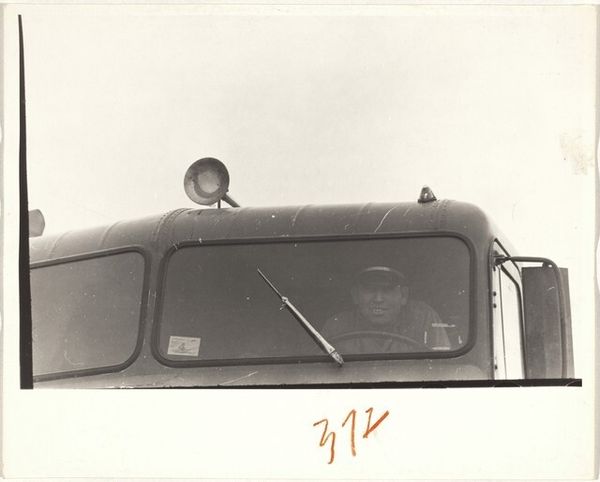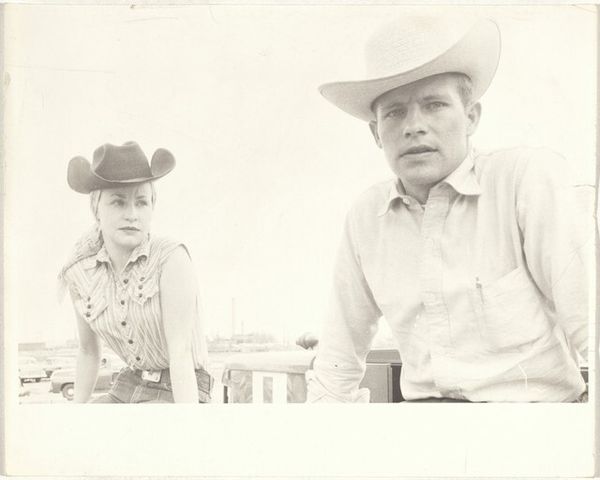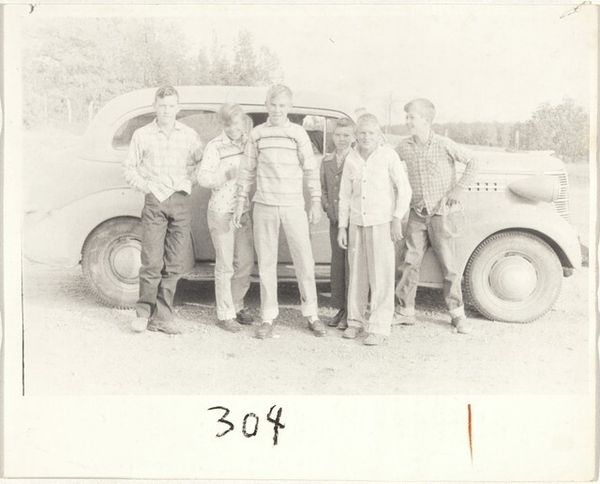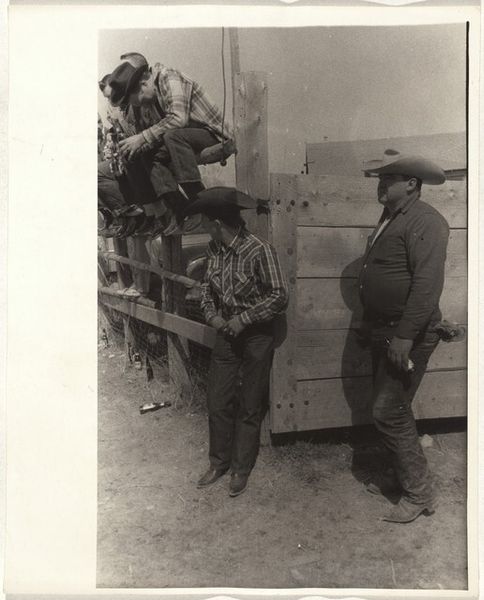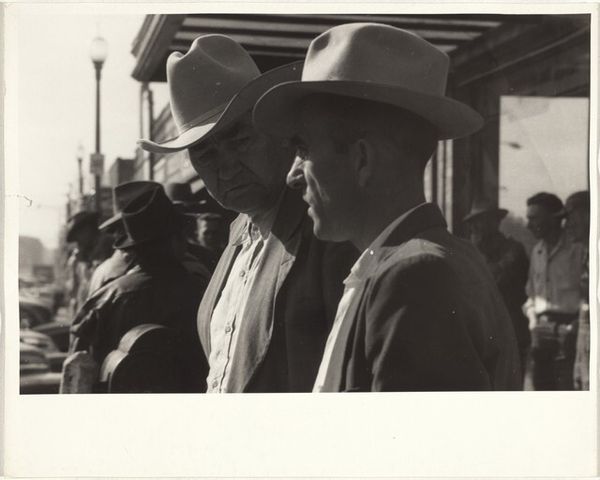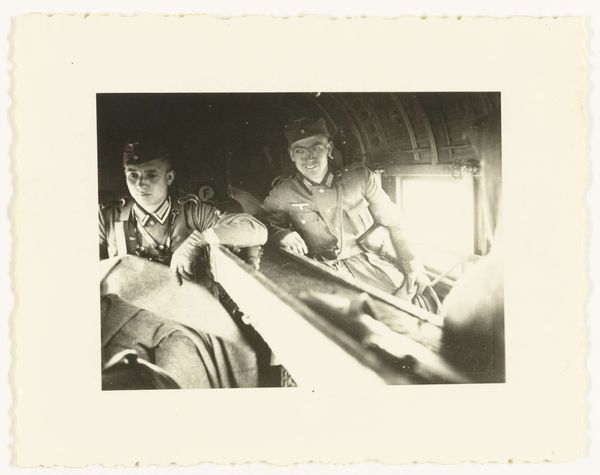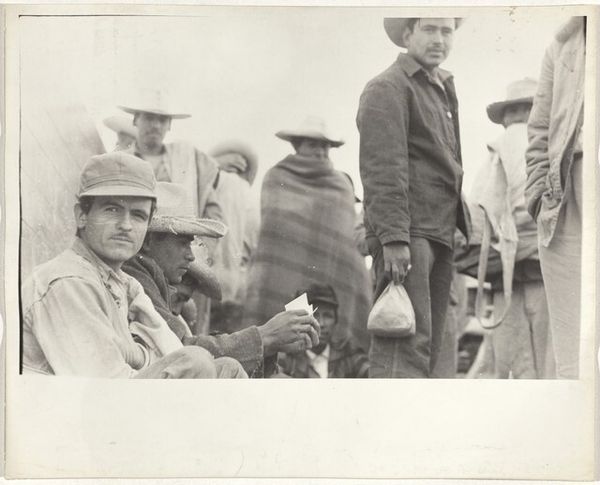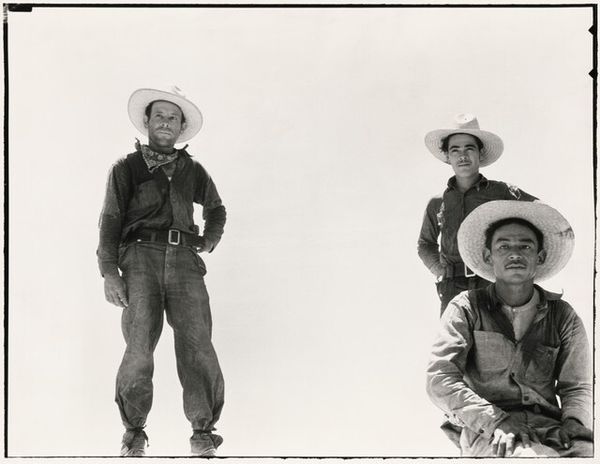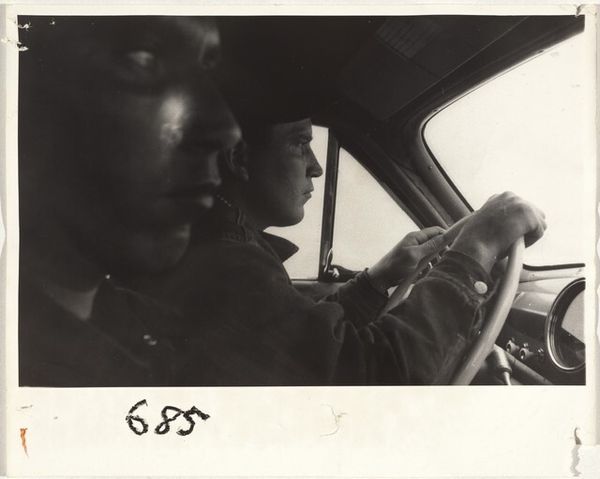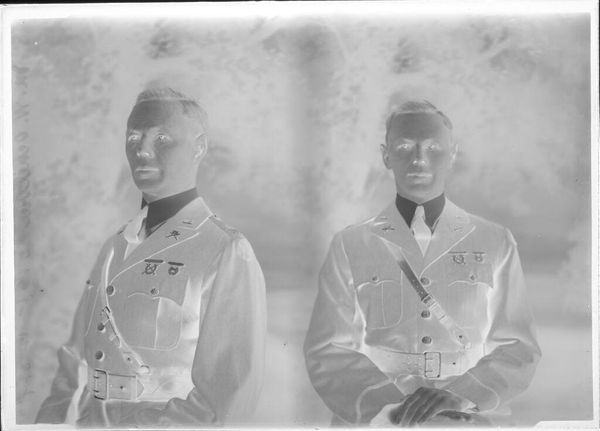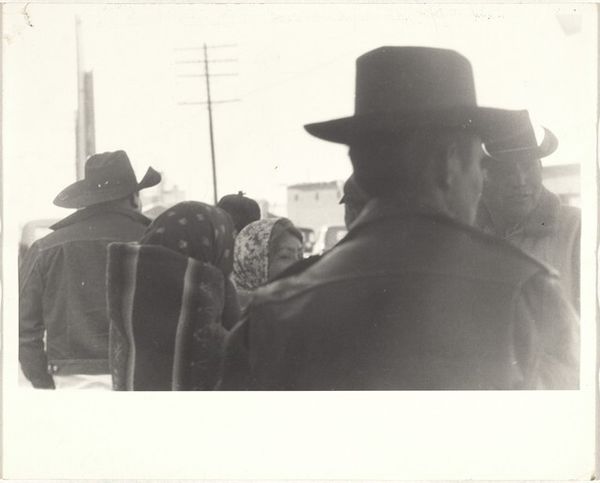
Dimensions: sheet: 20.3 x 25.3 cm (8 x 9 15/16 in.)
Copyright: National Gallery of Art: CC0 1.0
Editor: Here we have Robert Frank's "Two cowboys--Alabama or Tennessee," a gelatin-silver print from 1955. It’s… kind of a hazy image. They almost look like they’re emerging from the fog. It has this very raw, snapshot quality. What stands out to you in this piece? Curator: The haze is key. It’s not just an aesthetic choice. Frank, traveling across America in the mid-50s, wasn’t just documenting; he was critiquing. The soft focus, the seemingly casual composition, they're all deliberate disruptions of the idealized imagery typically associated with the American West. Think about the role of cowboy imagery in projecting American strength and individualism, especially during the Cold War. What is this photograph trying to say about those ideals? Editor: It definitely feels like a subversion. They don’t look like John Wayne. More like ordinary guys. I wonder if that was intentional, considering the social climate. Curator: Exactly! Frank was often drawn to marginalized communities. These cowboys aren’t heroes on horseback. They’re working-class men, their faces showing weariness. Consider the "The Americans" series in its entirety: it challenged the celebratory narratives prevalent in mainstream media. Did Frank see the seeds of discontent simmering beneath the surface of the American Dream? Editor: That makes me think about the role of photography itself. Was he questioning its power to create and perpetuate myths? Curator: Absolutely. By rejecting established photographic conventions, Frank exposed the constructed nature of these images, forcing the viewer to question the narratives they convey. The ambiguity of the title even underscores that point; Alabama or Tennessee? Does it even matter? It's not about a specific place but about a broader social reality. Editor: Wow, I'll never look at a "simple" cowboy picture the same way again! Curator: And that's precisely why art, and understanding its history and context, is so crucial!
Comments
No comments
Be the first to comment and join the conversation on the ultimate creative platform.
